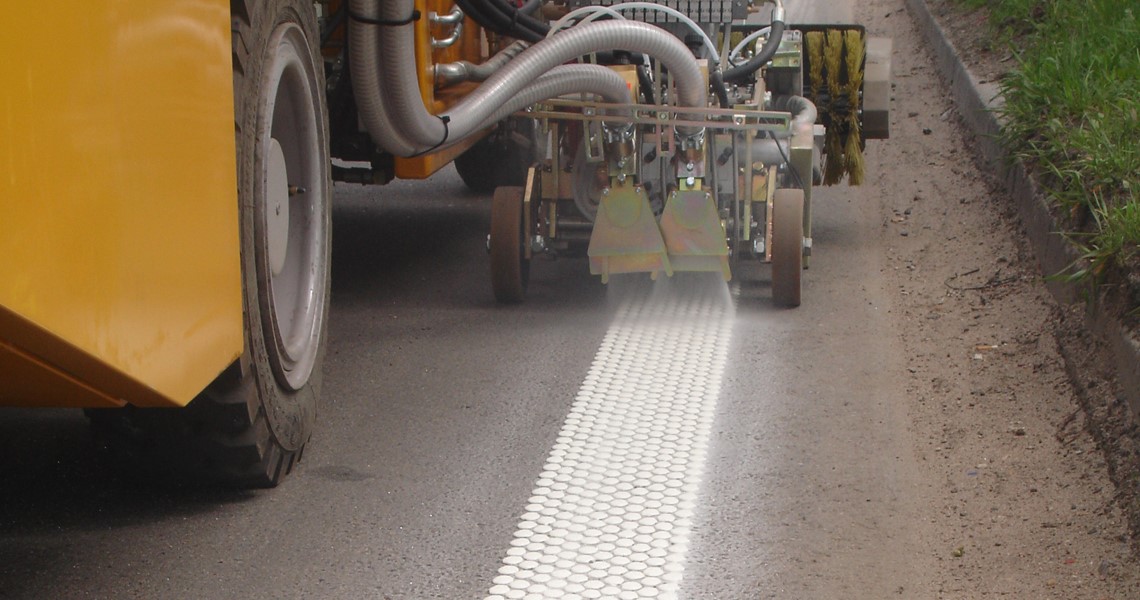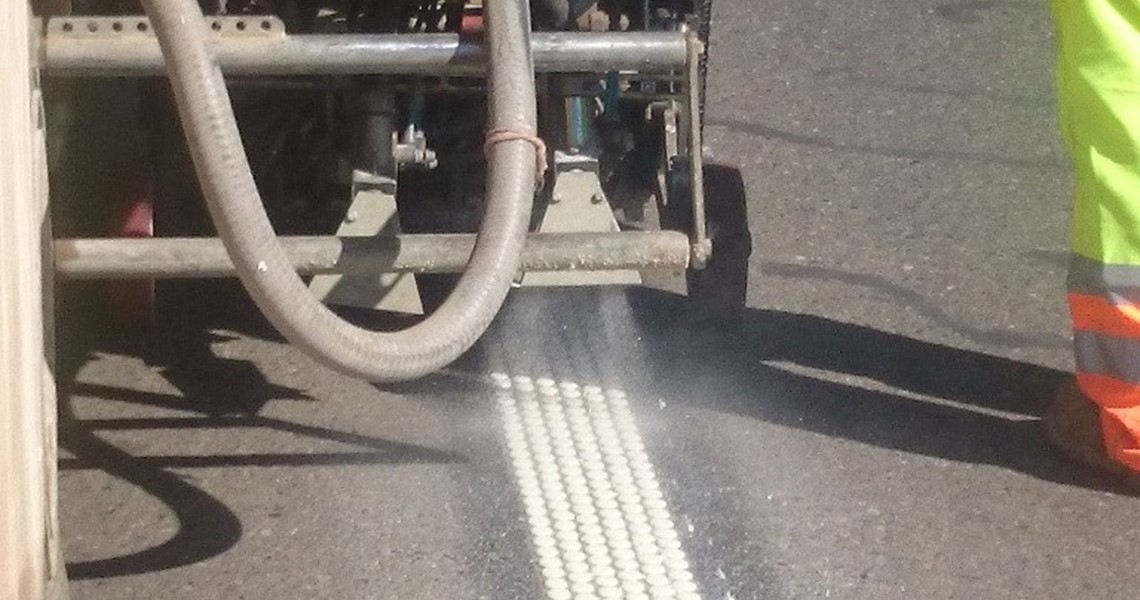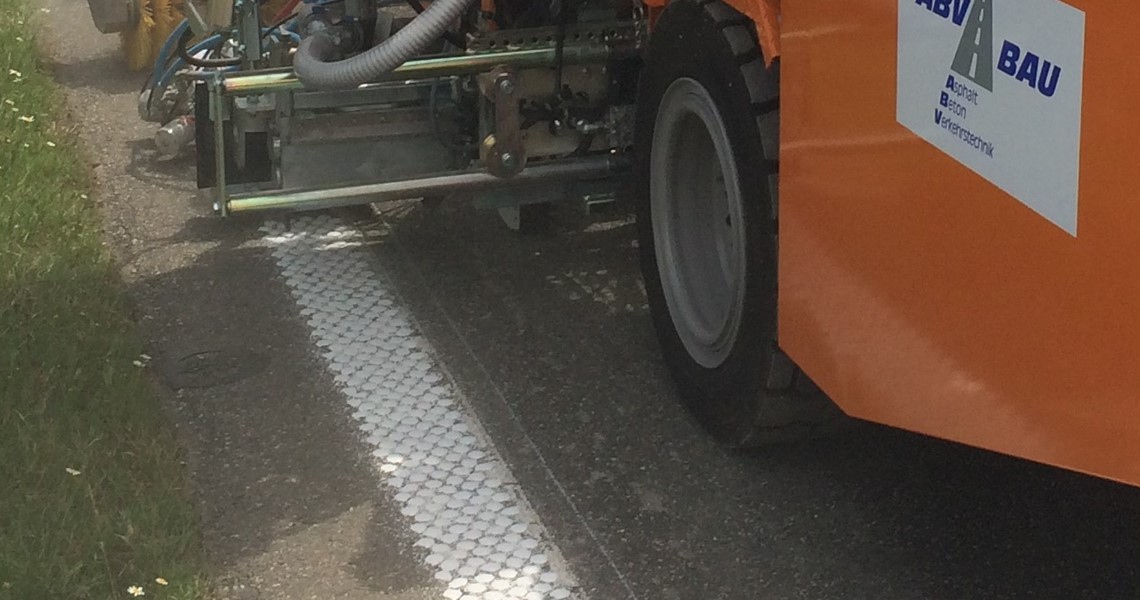Dot application methods are used for applying profiled markings in the shape of dots (also known as structures or type 2 markings). The dot applications can be applied with either thermoplastic or 2 component cold plastic material.
Profiled road markings are the newest road marking technology where a part of the road marking typology is raised over the road surface. This type of markings are becoming more and more popular because of the increased road safety it provides due to high visibility in wet conditions and at night.
Read more below
2-component dot equipment (98:2)
Line types: Profiled dots
Equipment: The unit consists of a basic unit with 6 dots in a row.
- It is possible to add additional rows one by one until you obtain the wanted line width.
It’s like lego building blocks! - The LineMaster computer can activate an alarm when hardener does not flow during marking work
- The LineMaster computer can activate an alarm when there is a break in the marking works (which is longer than set in the computer)
- Quantity dots/m 15-20. Number of DOT per meter (length-wise) is controlled in the LineMaster computer.
- Dot thickness is usually around 3-4 mm
- Possibility to apply line widths between 10-30 cm
- Recommended paint viscosity is higher than 8500 cp
- Usual marking speed is between 4 - 5 km/h depending on the conditions, e.g. material, line type, and operator experience
- The cleaning process is an automated preset sequence ensuring the correct valves are opening/closing. The system is activated via the Borum LineMaster computer.
- The sliding retainer frame can be used for all Borum 2-component equipment, which makes switching equipment easy and quick.
- Optional: Depending on the configuration, the system can handle working with both 2-component cold plastic and cold paint
Thermoplastic Dot'n line equipment
Line types: Flat and profiled lines, dot marking, combination of dots over line
Equipment: Consists of a head with shutters for making the lines in different combinations and thermoplastic pump for feeding the head (a screw pump that takes the material from the tank to the head).
- The equipment has one set of shutters for making the dots and one set of shutters with the same design as the Borum extruder, for making the baseline.
- The extruder head is available in 3 different sizes giving the max total width of the line: 30 cm, 40 cm or 50 cm
- The extruder head is fitted with a number of shutters for making lines as requested; standard shutters of 5 cm width (E.g. 6 shutters of 5 cm for the 30 cm head)
- Shutters of other sizes than the 5 cm are delivered by special orders.
- Depending on choice of head the extruder is capable of applying widths of 5 cm to 50 cm in width
- Number of Dots per meter line is 15 – 35, but can be varied while marking using the LineMaster Computer
- Diameter of Dots can be chosen between ø18 and ø45 m
- Multiple lines can be marked simultaneously with this one equipment (e.g. double lines)
- Line thickness is usually between 3 - 5 mm
- Usual working speed is 2 - 5 km/h depending on the conditions, e.g. material, line type and operator experience
- Effective heating of all significant parts of the extruder ensures the material does not stiffen and set inside the equipment
- Continuous circulation of the material inside the extruder ensures a homogeneous viscosity and prevents settling of sand/glass beads
- Built-in pressure regulating system ensures uniform line width and thickness, even when making broken and solid lines at the same time



